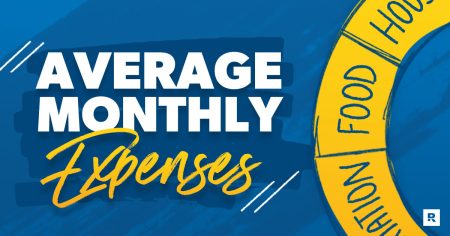Credit Sesame’s personal finance news roundup June 15, 2024. Stories, news, politics and events impacting personal finance during the past week.
Federal Reserve stands pat and pulls back on rate cut forecast
The Federal Reserve concluded its latest meeting by announcing that it would continue to maintain interest rates in a range of 5.25% to 5.50%. That’s the same interest rate target the Fed has maintained since July 2023. In addition, the Fed released updated economic projections, which dampened the prospect of interest rate cuts this year. Previously, the Fed had expected to cut the Fed funds rate to 4.6% by the end of 2024. Now, they project that rate will be at 5.1% at year-end, suggesting there will be just one quarter-point cut in the second half of 2024. The Fed also raised its inflation projections for this year and next. Based on the Personal Consumption Expenditures price index, the Fed had previously expected inflation to fall to 2.6% by the end of this year and 2.2% by the end of next year. Those expectations have been raised to 2.8% and 2.3%, respectively. See news release at FederalReserve.gov.
Inflation paused in May 2024
The seasonally adjusted Consumer Price Index (CPI) was unchanged in May. That made it the first month with no inflation since July of 2022. Core inflation, which excludes the volatile food and energy sectors, was up 0.2% in May. The latest figures put total inflation up by 3.3% over the past year and core inflation up by 3.4%. Trailing twelve-month inflation has stayed in a range of 3.1% to 3.7% since June of 2023. The Federal Reserve’s target for inflation is 2.0%, though it uses a different measure of inflation than the CPI. See inflation report at BLS.gov.
Producer prices declined in May 2024
The Bureau of Labor Statistics reported that the Producer Price Index (PPI) fell by 0.2% in May 2024. This represents a reversal in direction after April’s 0.5% increase. Prices for goods declined by 0.8% in May, while prices for services were unchanged. Lower producer prices reduce the pressure on retailers to raise their prices, so they can eventually lead to lower inflation for consumers. However, month-to-month PPI numbers can be quite erratic, so producer prices would have to continue to moderate before there would be any likely benefit to consumers. See details at BLS.gov.
Household wealth continues to rise
Household wealth in the United States rose to over $160 trillion in the first quarter of 2024, reaching a new high. This represented a net gain of $5.1 trillion, or 3.2%. A strong stock market in the first quarter created $3.8 trillion of that gain. Rising real estate prices were another significant factor, representing $0.9 trillion of the first quarter’s gains. Notably, these gains would not benefit people without stock market or real estate assets. On the other side of the ledger, household debt rose 2.9% during the quarter. See details at Reuters.com.
Consumer borrowing slows
Consumers continued to moderate their borrowing in April 2024. According to the Federal Reserve, consumer debt increased at a seasonally adjusted annual rate of 1.5% during the month. In a reversal of the trend from recent years, revolving credit grew more slowly than nonrevolving credit. Revolving credit rose at an annual pace of just 0.4% in April, compared to 2.2% for nonrevolving debt. Most revolving debt is in credit card balances, which typically carry higher interest rates than nonrevolving debt. See consumer credit data at FederalReserve.gov.
FBI warns drivers about fake toll scam
Motorists in Massachusetts have been receiving text messages claiming they owe tolls assessed by EZ Pass readers. The FBI warns that these messages are fakes. The scam attempts to get people to click on a link where they can provide credit card information to pay the toll. The scammers then use that card information for fraudulent purchases. The Massachusetts Department of Transportation advises that it does not send texts requesting payments, so all such messages should be considered fakes. See article at NBCBoston.com.
CFPB proposes to exclude medical debt from credit reports
The Consumer Financial Protection Bureau (CFPB) has proposed a new rule to remove medical debt from credit reports. According to the CFPB, this would affect 15 million Americans who now owe a total of $49 billion in medical debt. The rule would prohibit lenders from using information about medical debt to make credit determinations and credit bureaus from reporting medical debt on their reports. The proposed rule would also prohibit lenders from accepting medical equipment as collateral for a loan. Though the CFPB is touting the bill as favorable to consumers, it could have an adverse effect on the cost and availability of credit, including for those who do not have medical debt. See announcement at ConsumerFinance.gov.
Weekly news headlines from Credit Sesame
Read the full article here










